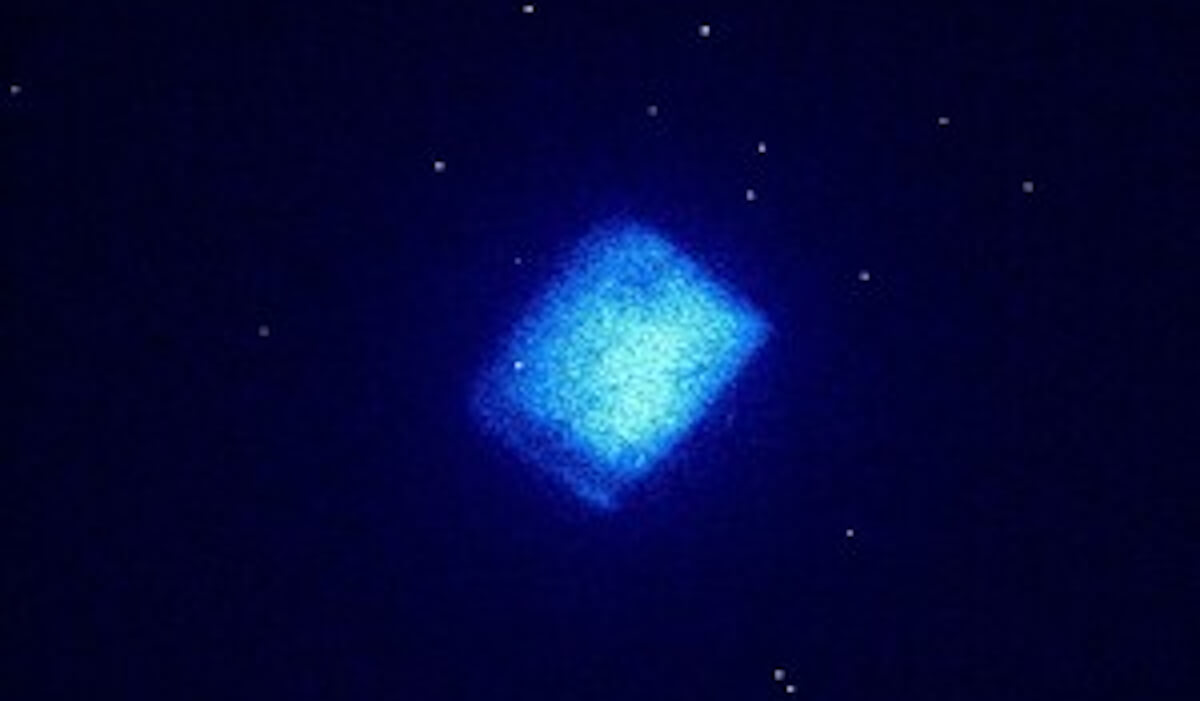The post Diamond battery made from nuclear waste will power devices for thousands of years by Felix Baumann appeared first on BASIC thinking. You can always stay up to date with our newsletter.

Researchers have developed a diamond battery based on the radioactive isotope carbon-14. It is designed to power devices for thousands of years.
Researchers from the UK Atomic Energy Authority (UKAEA) and the University of Bristol recently asked the world’s first carbon-14 diamond battery. It could power devices for thousands of years. The heart of the battery is the radioactive isotope carbon-14, which is known for radiocarbon dating.
The radioactive decay energy of carbon-14 captures electrons to produce electrical energy. This works similarly to solar cells, which convert light particles into electricity.
One advantage of the diamond battery is its longevity. Because carbon-14 has a half-life of 5,700 years, the battery remains active for thousands of years. This makes them particularly interesting for applications where conventional batteries are not practical.
Diamond battery for medicine and space travel
The diamond battery could open up new applications in medicine, for example in hearing aids or pacemakers. Patients would benefit from a drastic reduction in the number of necessary battery changes. The technology is also suitable for extreme environments – be it for space travel, in satellites or deep regions of the earth.
There the battery could supply power to various devices without having to be replaced. In addition to medical applications, it is also possible to use it for radio tracking systems or security devices because it continuously supplies small amounts of energy.
To produce the diamond battery, the research team developed a special plasma deposition process. They grew diamonds so that they securely trap carbon-14. This method is intended to ensure safety and sustainability as the radioactive carbon remains securely embedded in the diamond structure.
Advances in nuclear fusion brought the breakthrough
The expertise from nuclear fusion research was crucial for progress. Technologies that were originally developed for generating energy through nuclear fusion helped make the production of the diamond battery possible.
In the long term, this new type of battery could change the way we store and use energy – be it in medicine, space travel or industry. Further research and partnerships should make the technology even more versatile.
Also interesting:
- Lithium alternative: How do sodium-ion batteries work?
- Graphite trick: New electric car battery can be charged in 15 minutes
- Heat battery: Electric stones heat air or gas to almost 2,000 degrees
- Non-toxic and non-flammable: researchers are developing a new type of battery
The post Diamond battery made from nuclear waste will power devices for thousands of years by Felix Baumann appeared first on BASIC thinking. Follow us too Google News and Flipboard.
As a tech industry expert, I see great potential in the development of diamond batteries made from nuclear waste. This innovative technology has the ability to provide a long-lasting and sustainable power source for various devices, which is a significant advancement in the field of energy storage.
The use of nuclear waste to create diamond batteries not only promotes the recycling and repurposing of hazardous materials, but also offers a solution to the growing problem of electronic waste. By harnessing the energy from nuclear waste in a safe and efficient manner, we can reduce our reliance on traditional energy sources and minimize the environmental impact of power generation.
Furthermore, the longevity of diamond batteries is particularly appealing, as they have the potential to power devices for thousands of years without the need for frequent replacements or recharging. This could revolutionize the way we approach energy consumption and sustainability, offering a more reliable and sustainable option for powering electronic devices.
Overall, the development of diamond batteries from nuclear waste is an exciting prospect that could have far-reaching implications for the tech industry and beyond. I look forward to seeing how this technology continues to evolve and contribute to a more sustainable future.
Credits